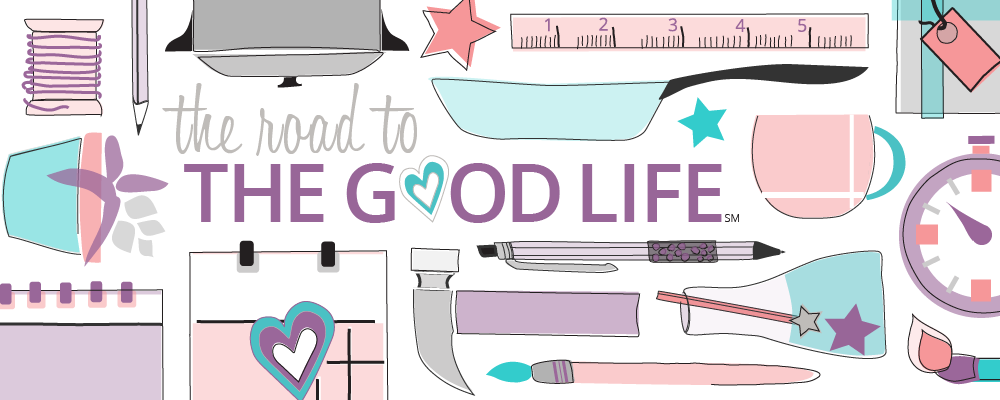Make: Crafting a Story
To chronicle my experience at Alt San Francisco earlier this month I decided to make a scrapbook. While crafting I discovered some key differences between a physical scrapbook and a digital scrapbook.
Physical scrapbooks, unlike digital scrapbooks, impose limits. You have a set number of pages in which to work. If you don't like the order of your book, you can't simply "cut and paste" to rearrange sections. If you have more photos and prose that you want to include, you can't simply add more pages.
Physical scrapbooks require you to drive your story rather than letting your story take shape as you go. (For my first Dispatches from The Station, a Blurbbook magazine, I wrote, edited, let it sit, read with fresh eyes, modified the layouts to improve the flow of the story, let it sit some more, rewrote, edited, and then published.)
To create my physical scrapbook, I had to work differently than I would if I was creating a digital scrapbook. If I wanted a polished end result, I needed to plan what I was going to include and think about how I was going to lay out the information and the page spreads.
Supplies
This project required the following tools and supplies:
- 20-page wire bound journal with mix of open pages and pages with prompts
- 2 to 3 rolls of color coordinated Washi tape
- Photographs
- Found or collected ephemera
- Pen
- Scissors
Instructions
- Gather all of the photographs and ephemera you'd like to include in your scrapbook. For my ALT SF scrapbook, I had business cards, pins, and photographs that I wanted to include along with memorable quotes from the sessions and reflections.
- Decide how you'll group information and sort. I decided to start with photographs of me that Brooke Dennis took (thank you Atly!) and lay them out chronologically. I chose images I wanted to represent a specific event, the Bing sponsor dinner at Boulevard, the morning roundtables, the keynote session, and the Alice in Pinterland party. I also wanted to display all of the business cards I'd collected so I organized them next. I broke them up into groups according to their colors.
- Sketch out any quotes you're planning on putting into your scrapbook. This helps you figure out where you should place quotes so that everything fits nicely.
- Mock up your pages. Determine how you want everything to work together. If your journal is blank you have more freedom. 11 of the pages in the journal Vivint gave attendees include prompts. I also decided I didn't want to mix photographs and business cards. I filled 8 of the 40 pages with photographs, and another 9 pages with business cards. (You can view the final business card pages in yesterday's post.)
- Affix your photographs and ephemera into your scrapbook.
- Transfer your sketched out quotes onto the pages. Go slowly so that you don't accidentally misspell a word.
- (Optional) Add embellishments.
Reflecting on My Participation in the 2013 Find Your Voice Workshop
I found the 2013 Find Your Voice Workshop can be as superficial or as intensive as you want. I've used the creative call-to-action associated with each lesson to consistently step outside of my comfort zone. Luckily, it's self-paced so you can go through it as quickly or as slowly as you want and revisit lessons as you find out more about yourself and determine what you do or do not want to reveal.
As a contributor, I've had the added challenge of exploring my voice while keeping up with the workshop pacing to offer assistance and ideas. There have been many times I've been tempted to take a shortcut.
I'm glad I chose not to shortcut the process (Kristin has done an amazing job developing worksheets and structuring prompts) and instead explored many different media for telling a story: a project binder for Week 1: Introduction; a vintage skirt hanger repurposed as a mood board for Week 2: Who Are You?; a photo memoir box for Week 4: What is Your Storytelling Style; and I AM photo labels for Week 5: What is Your Design Style.
Until working with a variety of media, I hadn't thought about how the media you chose for your story shapes it directly or indirectly. In some cases, you have a finite set of pages. When scrapbooking, not only do you have a finite set of pages, you also need to sketch and refine prose and layouts before committing to your design (not all glue is repositionable).
Join us This Summer for a Free Storytelling Workshop
If you've been searching for your voice, I highly recommend joining us for the 2015 Find Your Voice Workshop, starting Wednesday July 1st 2015. To get a taste of what to expect, check out some of the projects I completed for the inaugural workshop in 2013:
- Week 1: Introduction - I decorated my project binder.
- Week 2: Who Are You? - I repurposed a vintage skirt hanger as a mood board.
- Week 4: What is Your Storytelling Style - I created a photo memoir box.
- Week 5: - I made I AM photo labels.
Credits: All layouts designed by and images taken by Eden Hensley Silverstein for The Road to the Good Life.
